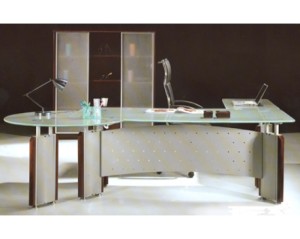 Amid Miami's dynamic atmosphere, office spaces are evolving alongside the city's iconic skyline. The ongoing debate around cubicle design—open versus closed—continues to be a critical conversation for business leaders and office planners.
Amid Miami's dynamic atmosphere, office spaces are evolving alongside the city's iconic skyline. The ongoing debate around cubicle design—open versus closed—continues to be a critical conversation for business leaders and office planners.
As organizations strive to balance collaboration with individual focus, exploring how different layouts influence productivity, employee satisfaction, and overall office culture is essential.
The Rise of Open Cubicles
In recent years, many Miami offices have embraced the concept of open cubicles. This design philosophy aims to foster collaboration, improve communication, and create a more dynamic work atmosphere. Proponents argue that breaking down physical barriers increases creativity and a stronger sense of community among employees.
Open cubicles typically feature lower partitions, shared workspaces, and communal areas. This layout encourages spontaneous interactions and makes collaborating on projects easier for team members. The open design also allows more natural light to permeate the office, potentially boosting mood and productivity.
The Case for Closed Cubicles
Despite the popularity of open designs, there is a growing movement advocating for a return to more traditional closed cubicles. Supporters of this approach emphasize the importance of privacy, focus, and individual work styles.
Closed cubicles offer employees a dedicated personal space with higher partitions, reducing visual and auditory distractions. This setup can be particularly beneficial for tasks requiring deep concentration or confidentiality. Moreover, these new cubicle designs provide a sense of ownership over one's workspace, which some argue leads to increased job satisfaction and employee retention.
Finding the Middle Ground
As the debate continues, many Miami offices are exploring hybrid solutions that combine elements of both open and closed designs. These compromises aim to balance the benefits of collaboration with the need for privacy and focused work.
Some innovative approaches include:
- Modular cubicle systems that can be easily reconfigured based on project needs
- Activity-based workspaces that offer a variety of environments for different tasks
- Enclosed "focus pods" within open office layouts for private work or phone calls
Considering Employee Preferences
One crucial factor often overlooked in this debate is employee preference. Miami's diverse workforce encompasses various work styles and personal preferences. While some thrive in open, collaborative environments, others perform best in quieter, more private settings.
Progressive companies are increasingly involving employees in the decision-making process when it comes to office design. Surveys, focus groups, and trial periods for different layouts can help identify the most effective solution for each unique workplace.
The Impact on Company Culture
The choice between open and closed cubicles goes beyond mere aesthetics or functionality—it can significantly influence company culture. Open layouts may promote a more casual, egalitarian atmosphere, while closed cubicles might reinforce a more structured hierarchy.
Miami businesses must consider how their office design aligns with their overall company values and the image they wish to project to both employees and clients.
The Final Word
The decision between open and closed cubicle designs in Miami offices ultimately depends on a company's specific goals and industry requirements. While open spaces foster collaboration and energy, closed cubicles offer privacy and focus.
By considering a hybrid approach, businesses can create an environment that meets the diverse needs of their workforce, promoting both innovation and efficiency. Regardless of the chosen layout, thoughtful design in office furniture Miami is key to a thriving workplace in the Magic City.
